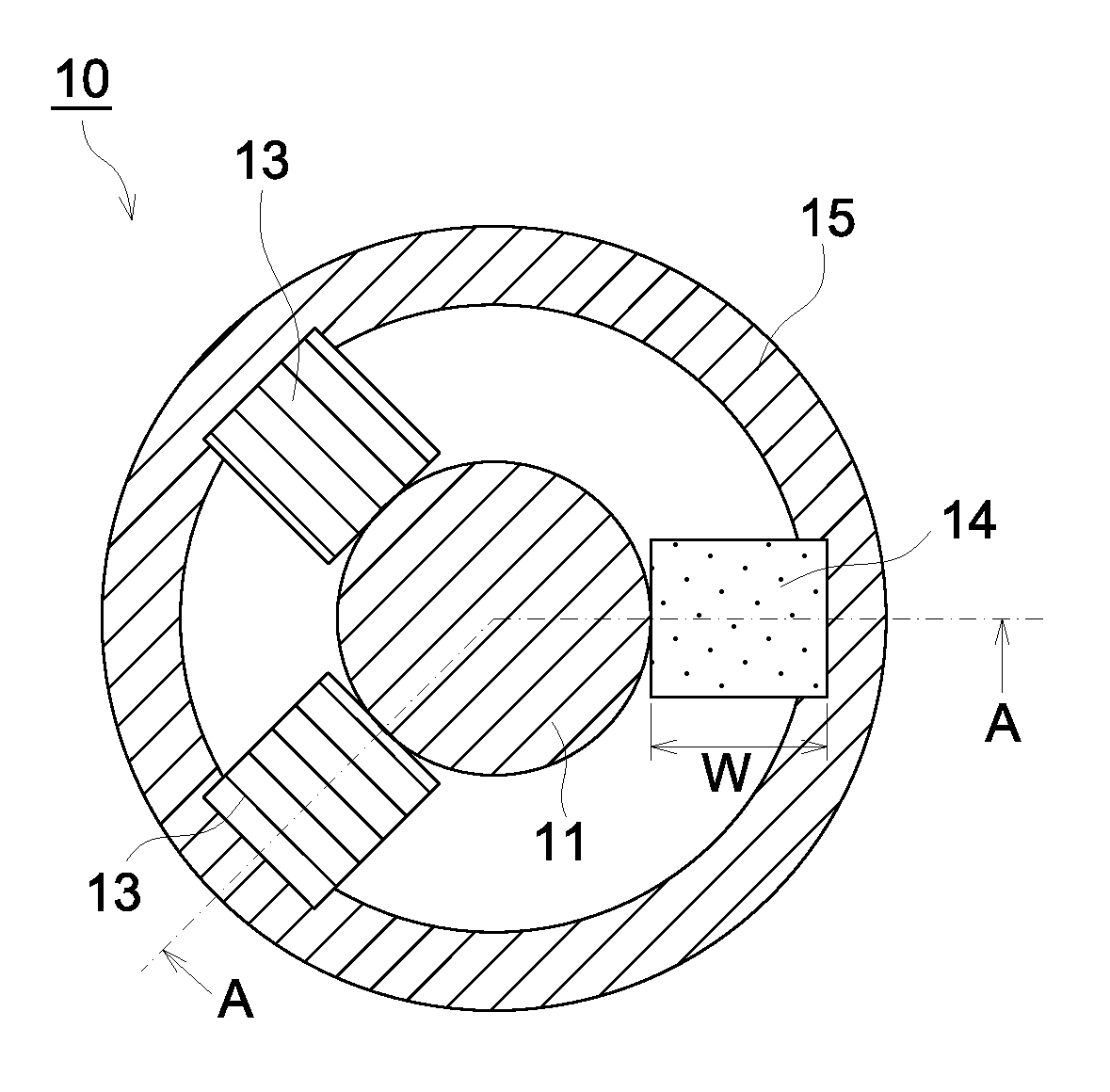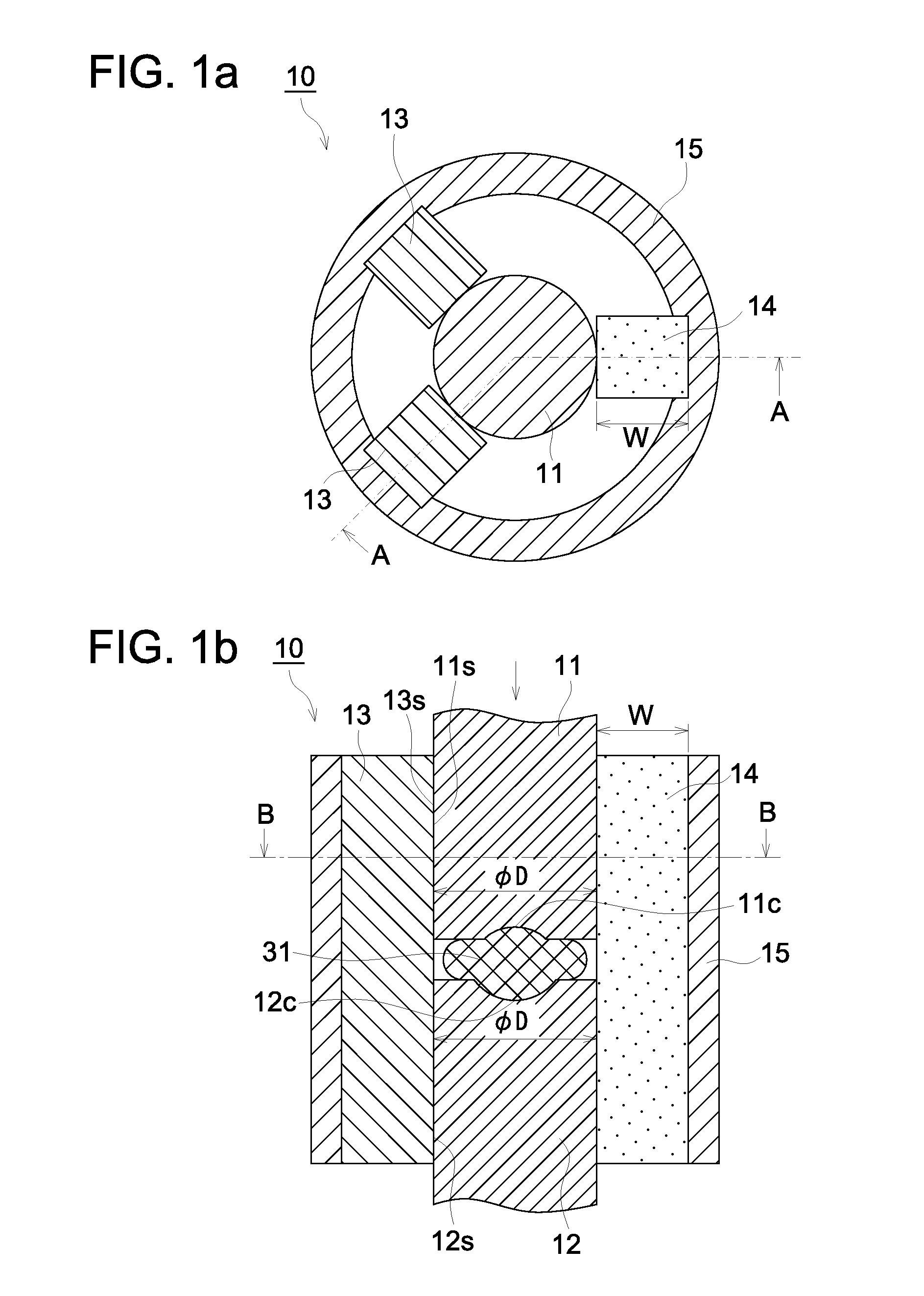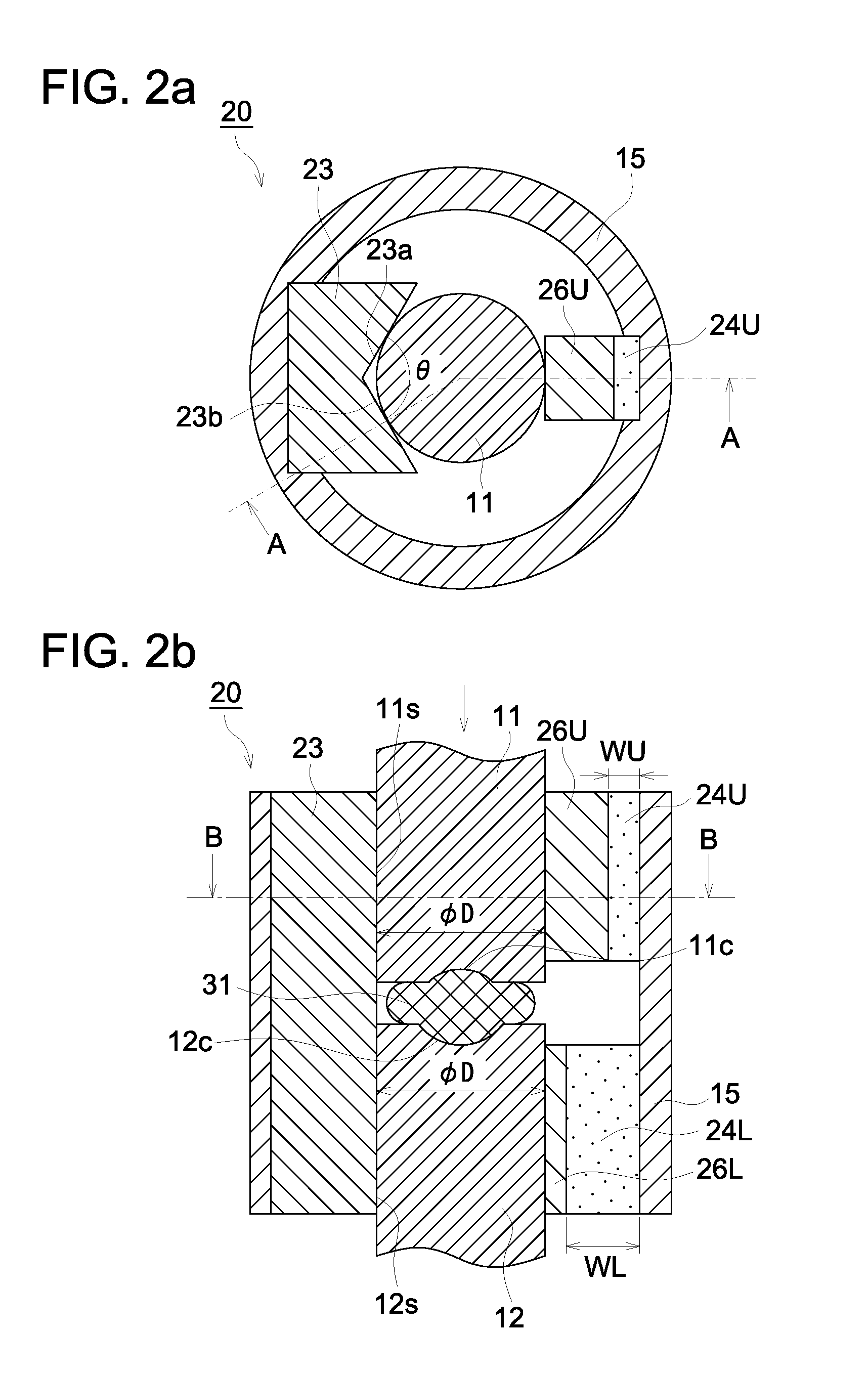Molding die and manufacturing method of optical element
a manufacturing method and technology of optical elements, applied in the field of molding dies, can solve the problems of increasing the demand for optical elements made of glass and the demand for performance is becoming more severe, and achieve the effects of suppressing any position shift of the top die, simple configuration, and small eccentricity
- Summary
- Abstract
- Description
- Claims
- Application Information
AI Technical Summary
Benefits of technology
Problems solved by technology
Method used
Image
Examples
first preferred embodiment
[0056]FIG. 1 is a diagram showing an example of a molding die according to the first preferred embodiment of the present invention, and shows the condition in the process of applying pressure to the glass material. FIG. 1a is a cross-sectional view diagram of a cross-section perpendicular to the direction of pressing (the press axis direction) the glass material and indicates the cross-section at B-B indicated in FIG. 1b. Further, FIG. 1b is a cross-sectional view diagram of a cross-section that is parallel to the press axis direction and indicates the cross-section at A-A indicated in FIG. 1a.
[0057]The molding die 10 shown in FIG. 1 has a top die 11, a bottom die 12, a guiding member 13, an expansion member 14, and a supporting member 15.
[0058]The top die 11 has the first pressure applying surface 11c that has been machined precisely with a shape corresponding to the first optical surface of the optical element and the bottom die 12 has the second pressure applying surface 12c tha...
second preferred embodiment
[0072]FIG. 2 is a diagram showing an example of a molding die according to the second preferred embodiment of the present invention, and shows the condition in the process of applying pressure to the glass material. FIG. 2a is a cross-sectional view diagram of a cross-section perpendicular to the direction of pressing the glass material (the press axis direction) and indicates the cross-section at B-B indicated in FIG. 2b. Further, FIG. 2b is a cross-sectional view diagram of a cross-section that is parallel to the press axis direction and indicates the cross-section at A-A indicated in FIG. 2a.
[0073]The molding die 20 shown in FIG. 2 is different from the molding die 10 described above in that the guiding member 23 is constituted of a V-block, the expansion member is made of a top expansion member 24U and a bottom expansion member 24L which respectively press against the top die 11 and the bottom die 12 via the spacers 26U and 26L. Since all other aspects of construction are simil...
PUM
| Property | Measurement | Unit |
|---|---|---|
| diameters | aaaaa | aaaaa |
| diameters | aaaaa | aaaaa |
| diameters | aaaaa | aaaaa |
Abstract
Description
Claims
Application Information
 Login to View More
Login to View More - R&D
- Intellectual Property
- Life Sciences
- Materials
- Tech Scout
- Unparalleled Data Quality
- Higher Quality Content
- 60% Fewer Hallucinations
Browse by: Latest US Patents, China's latest patents, Technical Efficacy Thesaurus, Application Domain, Technology Topic, Popular Technical Reports.
© 2025 PatSnap. All rights reserved.Legal|Privacy policy|Modern Slavery Act Transparency Statement|Sitemap|About US| Contact US: help@patsnap.com



